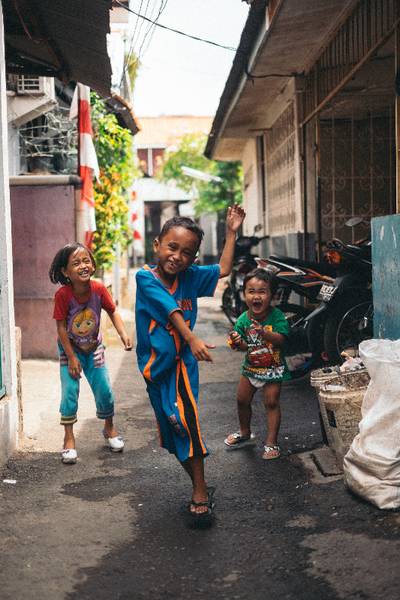Introduction #
Person segmentation is critical task in analysing humans on images for many real-world applications: action recognition, self-driving cars, video surveillance, mobile applications and much more.
We at Supervisely had our internal research on this field and we realized that there is a lack of data for this task. You can ask us: what about public datasets like COCO, Pascal, Mapillary and others? To answer this question i’ll better show you few examples from COCO dataset:
The quality of human segmentation in most public datasets is not satisfied our requirements and we had to create our own dataset with high quality annotations.
Summary #
Supervisely Persons is a dataset for instance segmentation, semantic segmentation, and object detection tasks. It is applicable or relevant across various domains.
The dataset consists of 5711 images with 6884 labeled objects belonging to 3 different classes including person_poly, person_bmp, and neutral.
Images in the Supervisely Persons dataset have pixel-level instance segmentation annotations. Due to the nature of the instance segmentation task, it can be automatically transformed into a semantic segmentation (only one mask for every class) or object detection (bounding boxes for every object) tasks. All images are labeled (i.e. with annotations). There are 13 splits in the dataset: ds6 (1988 images), ds8 (1407 images), ds2 (690 images), ds7 (533 images), ds1 (375 images), ds11 (227 images), ds5 (135 images), ds9 (129 images), ds3 (73 images), ds4 (59 images), ds12 (33 images), ds13 (33 images), and ds10 (29 images). Additionally, some images are marked with multipart-person and not-marked-people tags. The dataset was released in 2020 by the Supervisely.
Here is the visualized example grid with animated annotations:
Explore #
Supervisely Persons dataset has 5711 images. Click on one of the examples below or open "Explore" tool anytime you need to view dataset images with annotations. This tool has extended visualization capabilities like zoom, translation, objects table, custom filters and more. Hover the mouse over the images to hide or show annotations.




























































Class balance #
There are 3 annotation classes in the dataset. Find the general statistics and balances for every class in the table below. Click any row to preview images that have labels of the selected class. Sort by column to find the most rare or prevalent classes.
Class ㅤ | Images ㅤ | Objects ㅤ | Count on image average | Area on image average |
|---|---|---|---|---|
person_poly➔ polygon | 4474 | 5073 | 1.13 | 25.76% |
person_bmp➔ mask | 1248 | 1586 | 1.27 | 24.65% |
neutral➔ polygon | 175 | 225 | 1.29 | 3.83% |
Co-occurrence matrix #
Co-occurrence matrix is an extremely valuable tool that shows you the images for every pair of classes: how many images have objects of both classes at the same time. If you click any cell, you will see those images. We added the tooltip with an explanation for every cell for your convenience, just hover the mouse over a cell to preview the description.
Images #
Explore every single image in the dataset with respect to the number of annotations of each class it has. Click a row to preview selected image. Sort by any column to find anomalies and edge cases. Use horizontal scroll if the table has many columns for a large number of classes in the dataset.
Object distribution #
Interactive heatmap chart for every class with object distribution shows how many images are in the dataset with a certain number of objects of a specific class. Users can click cell and see the list of all corresponding images.
Class sizes #
The table below gives various size properties of objects for every class. Click a row to see the image with annotations of the selected class. Sort columns to find classes with the smallest or largest objects or understand the size differences between classes.
Class | Object count | Avg area | Max area | Min area | Min height | Min height | Max height | Max height | Avg height | Avg height | Min width | Min width | Max width | Max width |
|---|---|---|---|---|---|---|---|---|---|---|---|---|---|---|
person_poly polygon | 5073 | 22.82% | 98.99% | 0% | 2px | 0.25% | 6295px | 100% | 769px | 72.36% | 2px | 0.13% | 5471px | 100% |
person_bmp mask | 1586 | 19.4% | 99.67% | 0.02% | 36px | 4.5% | 4475px | 100% | 613px | 69.22% | 13px | 1% | 5301px | 100% |
neutral polygon | 225 | 2.95% | 23.18% | 0.01% | 10px | 1.25% | 800px | 100% | 176px | 21.96% | 7px | 0.58% | 1125px | 93.91% |
Spatial Heatmap #
The heatmaps below give the spatial distributions of all objects for every class. These visualizations provide insights into the most probable and rare object locations on the image. It helps analyze objects' placements in a dataset.

Objects #
Table contains all 6884 objects. Click a row to preview an image with annotations, and use search or pagination to navigate. Sort columns to find outliers in the dataset.
Object ID ㅤ | Class ㅤ | Image name click row to open | Image size height x width | Height ㅤ | Height ㅤ | Width ㅤ | Width ㅤ | Area ㅤ |
|---|---|---|---|---|---|---|---|---|
1➔ | person_poly polygon | pexels-photo-28930.png | 800 x 1205 | 536px | 67% | 825px | 68.46% | 24.68% |
2➔ | person_poly polygon | pexels-photo-28930.png | 800 x 1205 | 572px | 71.5% | 296px | 24.56% | 10.74% |
3➔ | person_bmp mask | pexels-photo-274092.png | 800 x 1200 | 201px | 25.12% | 76px | 6.33% | 0.97% |
4➔ | person_bmp mask | pexels-photo-274092.png | 800 x 1200 | 219px | 27.38% | 75px | 6.25% | 0.7% |
5➔ | person_poly polygon | pexels-photo-71293.png | 800 x 600 | 380px | 47.5% | 229px | 38.17% | 7.62% |
6➔ | person_poly polygon | pexels-photo-71293.png | 800 x 600 | 373px | 46.62% | 373px | 62.17% | 12.08% |
7➔ | person_poly polygon | pexels-photo-744487.png | 800 x 1067 | 124px | 15.5% | 38px | 3.56% | 0.35% |
8➔ | person_poly polygon | pexels-photo-744487.png | 800 x 1067 | 107px | 13.38% | 43px | 4.03% | 0.32% |
9➔ | person_poly polygon | pexels-photo-744487.png | 800 x 1067 | 92px | 11.5% | 38px | 3.56% | 0.22% |
10➔ | person_poly polygon | maldives-sunset-wedding-bride-37521.png | 800 x 1202 | 317px | 39.62% | 276px | 22.96% | 4.93% |
License #
This Supervisely Person Dataset is made freely available to academic and non-academic entities for non-commercial purposes such as academic research, teaching, scientific publications, or personal experimentation.
The Supervisely Person Dataset data includes images obtained from the “pexels” website. Use of these images must respect the corresponding terms of use:
Citation #
If you make use of the Supervisely Persons data, please cite the following reference:
@dataset{Supervisely Persons,
author={Supervisely},
title={Supervisely Persons},
year={2020},
url={https://ecosystem.supervisely.com/projects/persons}
}
If you are happy with Dataset Ninja and use provided visualizations and tools in your work, please cite us:
@misc{ visualization-tools-for-supervisely-persons-dataset,
title = { Visualization Tools for Supervisely Persons Dataset },
type = { Computer Vision Tools },
author = { Dataset Ninja },
howpublished = { \url{ https://datasetninja.com/supervisely-persons } },
url = { https://datasetninja.com/supervisely-persons },
journal = { Dataset Ninja },
publisher = { Dataset Ninja },
year = { 2026 },
month = { jan },
note = { visited on 2026-01-11 },
}Download #
Dataset Supervisely Persons can be downloaded in Supervisely format:
As an alternative, it can be downloaded with dataset-tools package:
pip install --upgrade dataset-tools
… using following python code:
import dataset_tools as dtools
dtools.download(dataset='Supervisely Persons', dst_dir='~/dataset-ninja/')
Make sure not to overlook the python code example available on the Supervisely Developer Portal. It will give you a clear idea of how to effortlessly work with the downloaded dataset.
The data in original format can be downloaded here.
Disclaimer #
Our gal from the legal dep told us we need to post this:
Dataset Ninja provides visualizations and statistics for some datasets that can be found online and can be downloaded by general audience. Dataset Ninja is not a dataset hosting platform and can only be used for informational purposes. The platform does not claim any rights for the original content, including images, videos, annotations and descriptions. Joint publishing is prohibited.
You take full responsibility when you use datasets presented at Dataset Ninja, as well as other information, including visualizations and statistics we provide. You are in charge of compliance with any dataset license and all other permissions. You are required to navigate datasets homepage and make sure that you can use it. In case of any questions, get in touch with us at hello@datasetninja.com.


